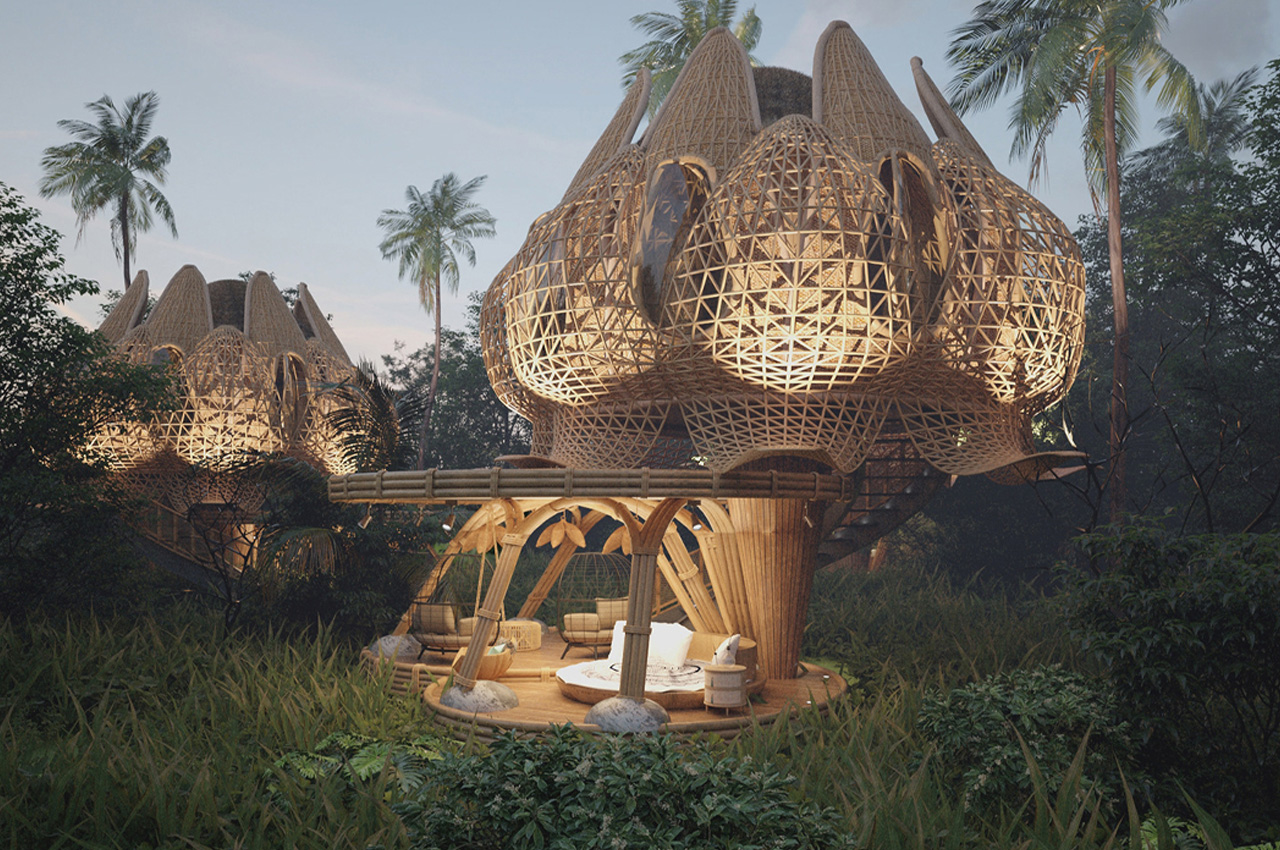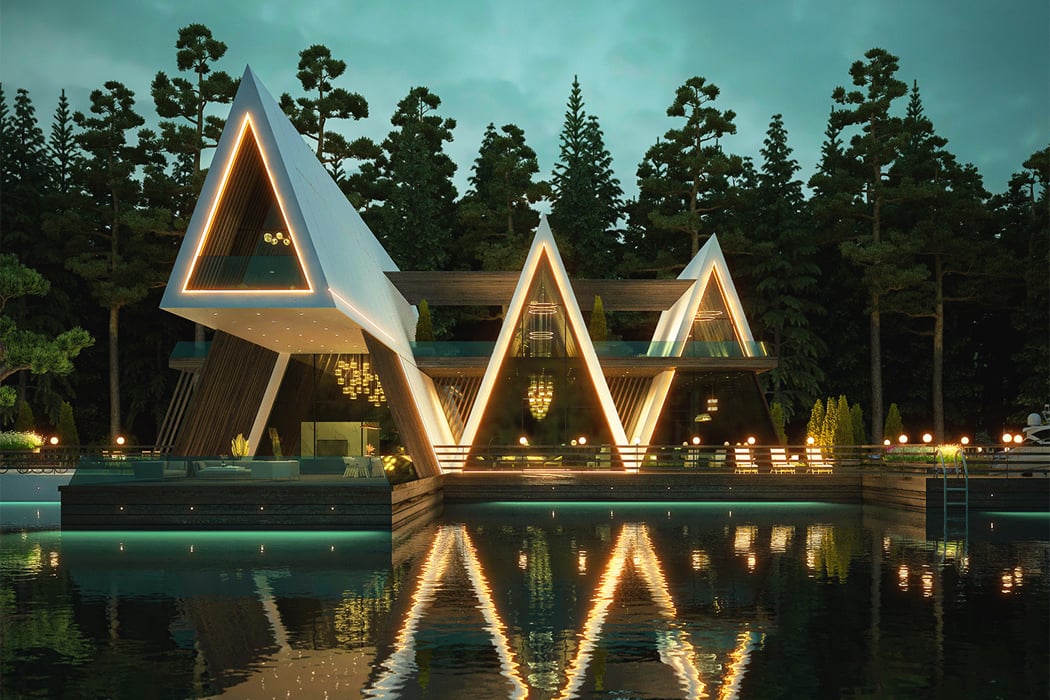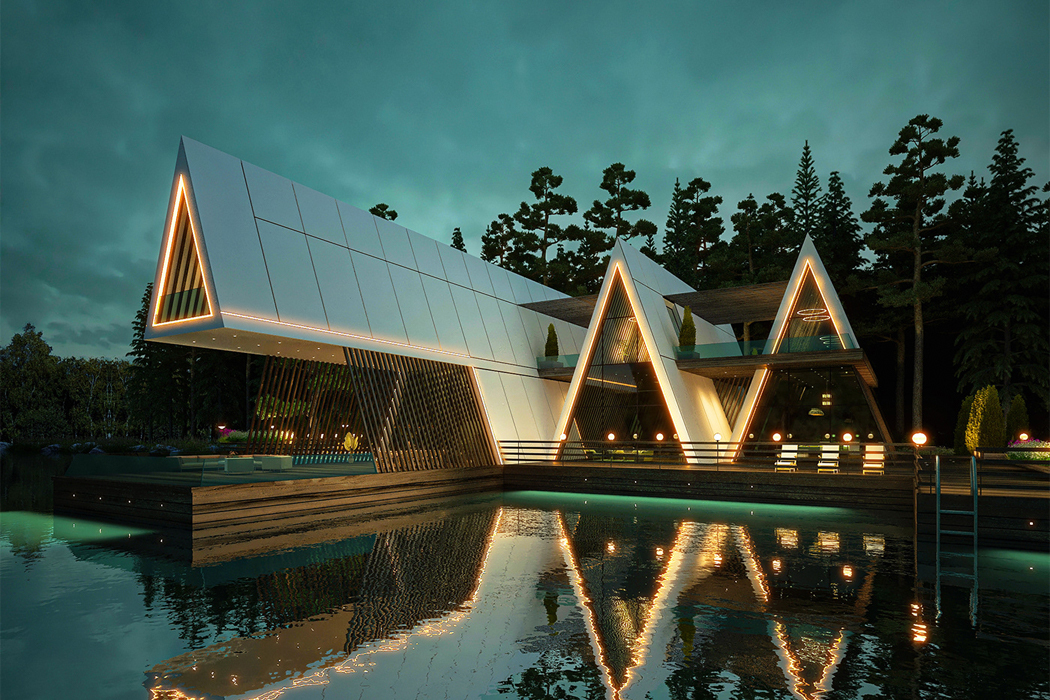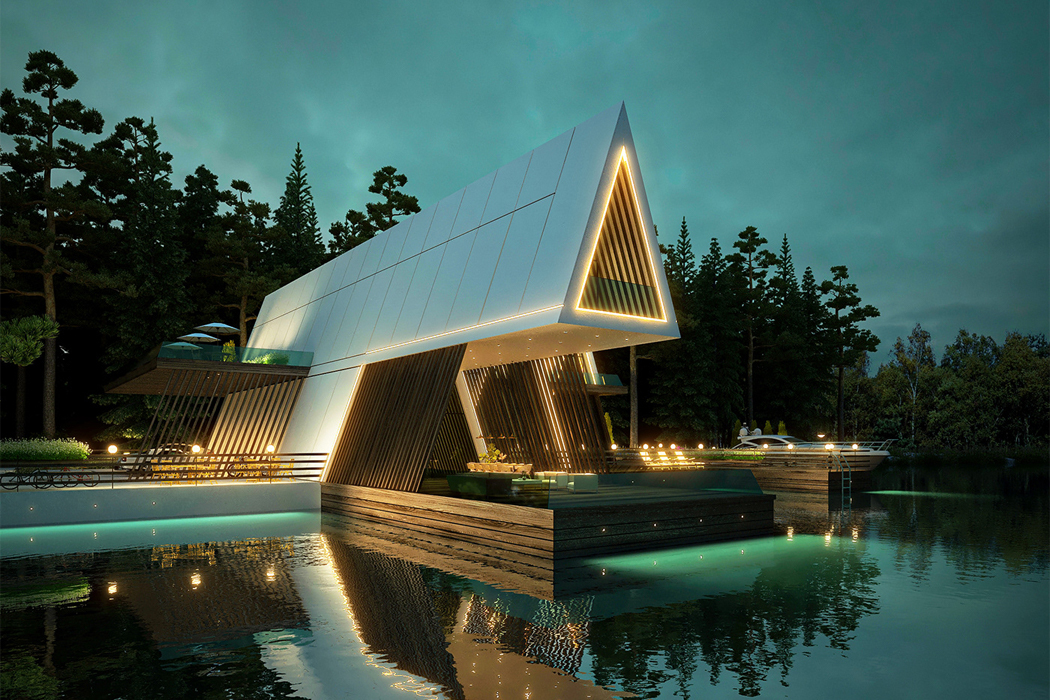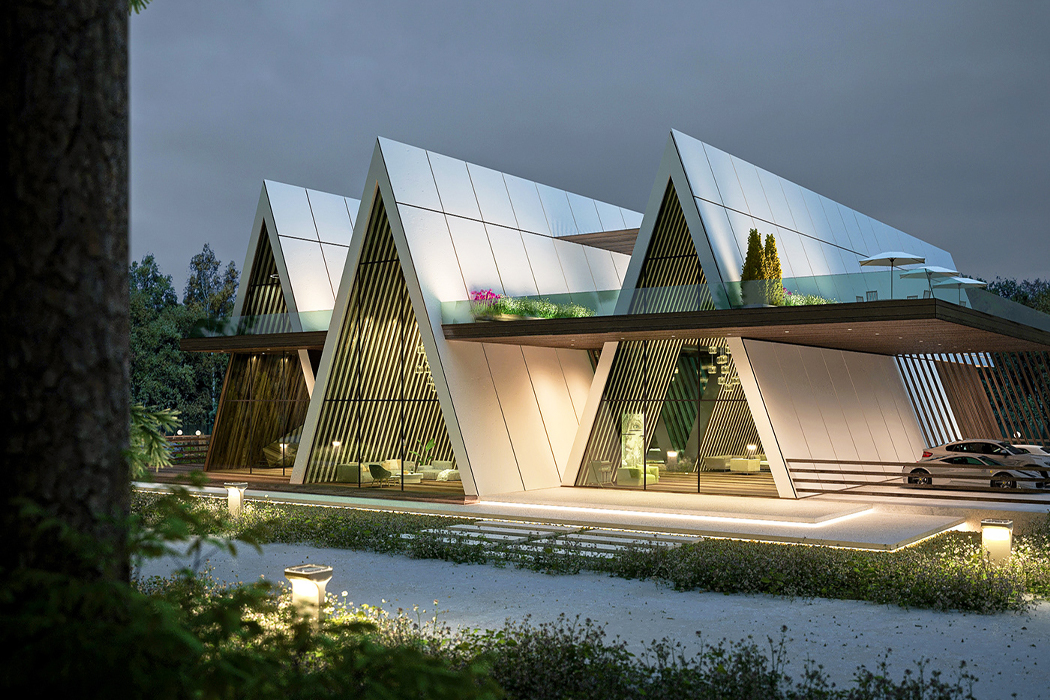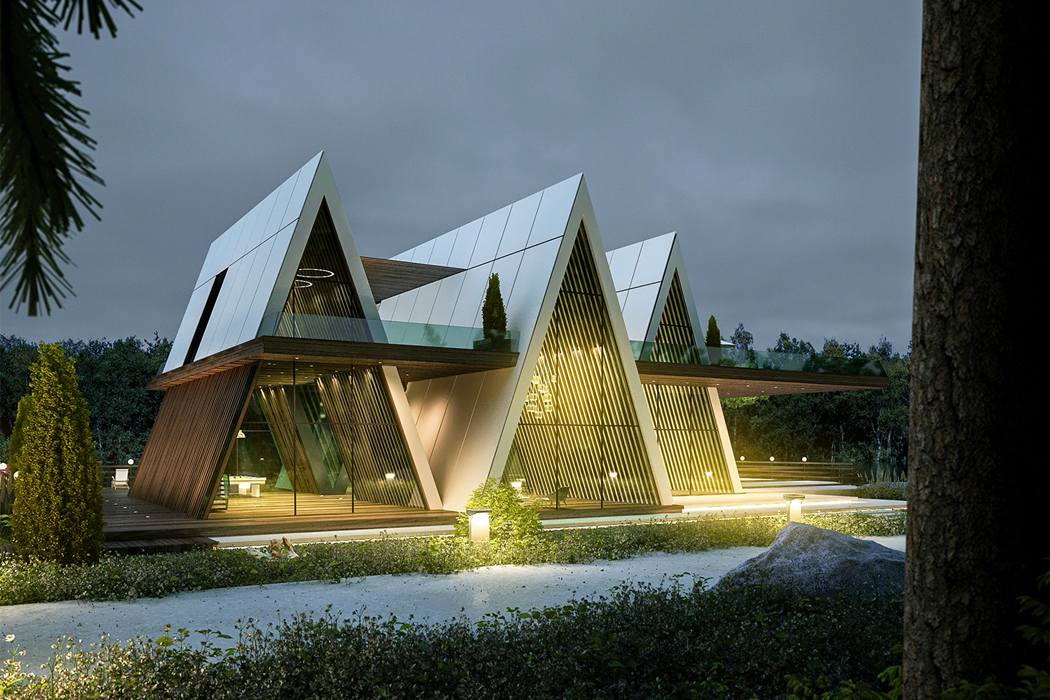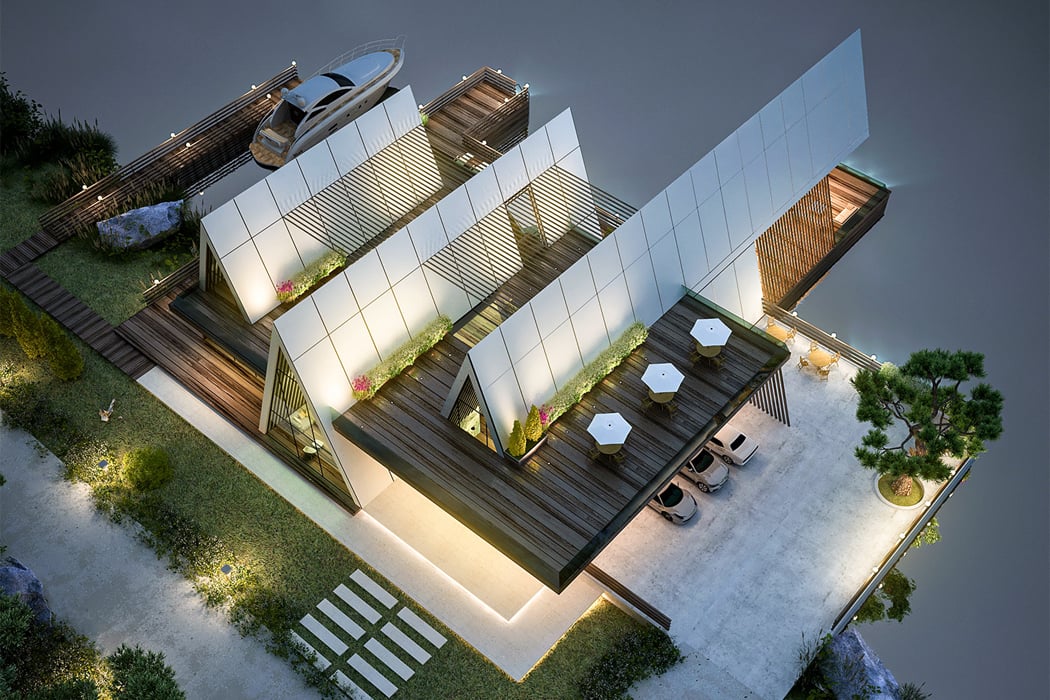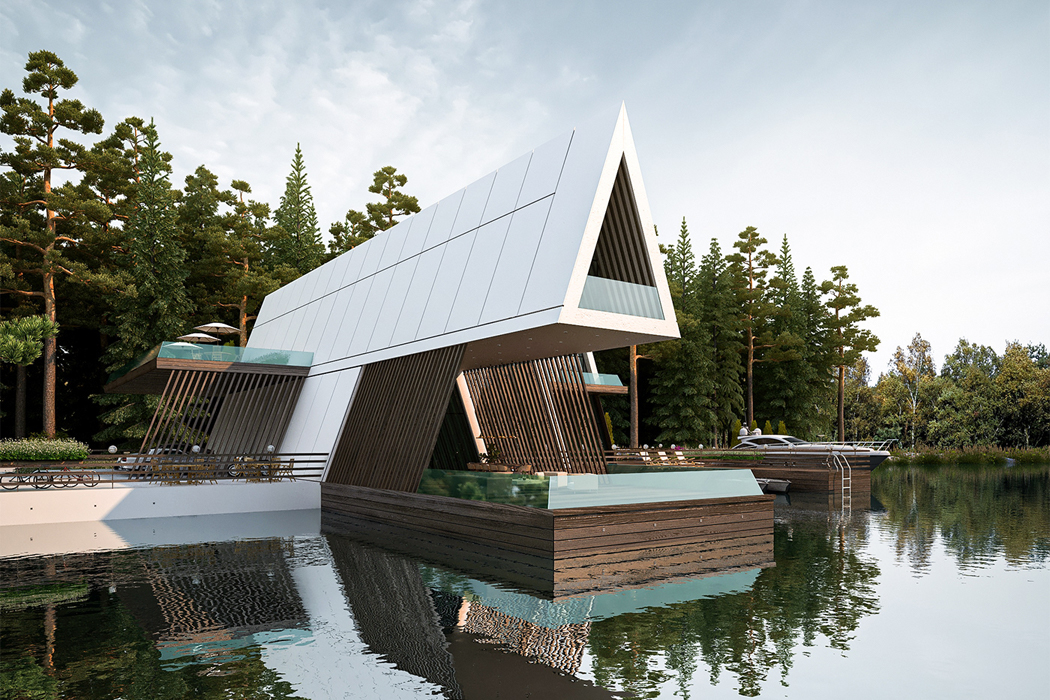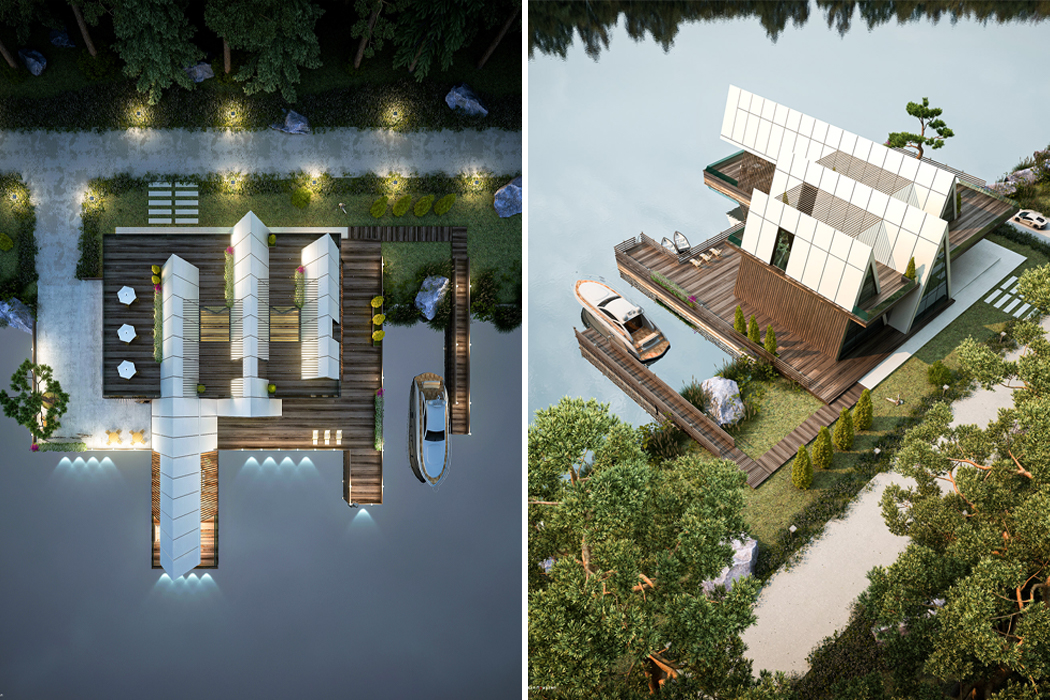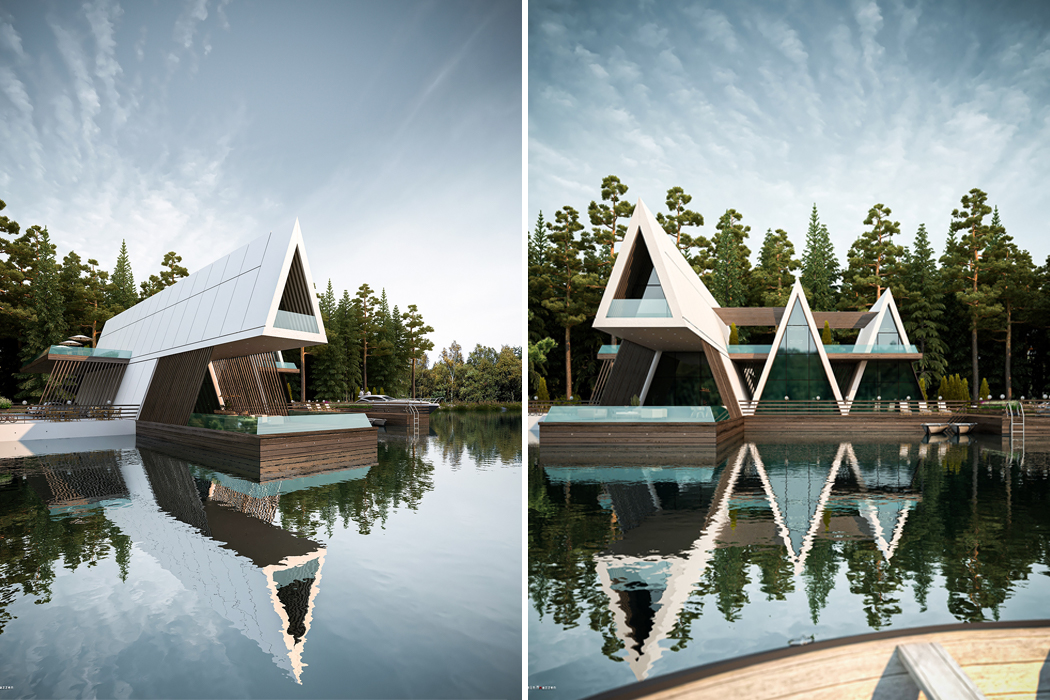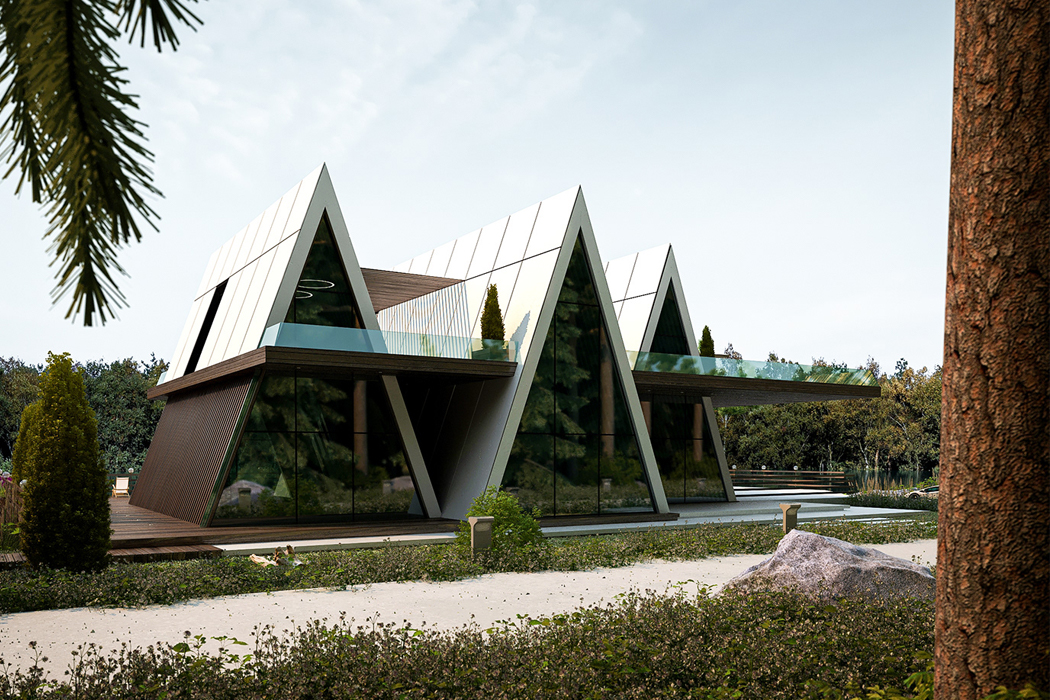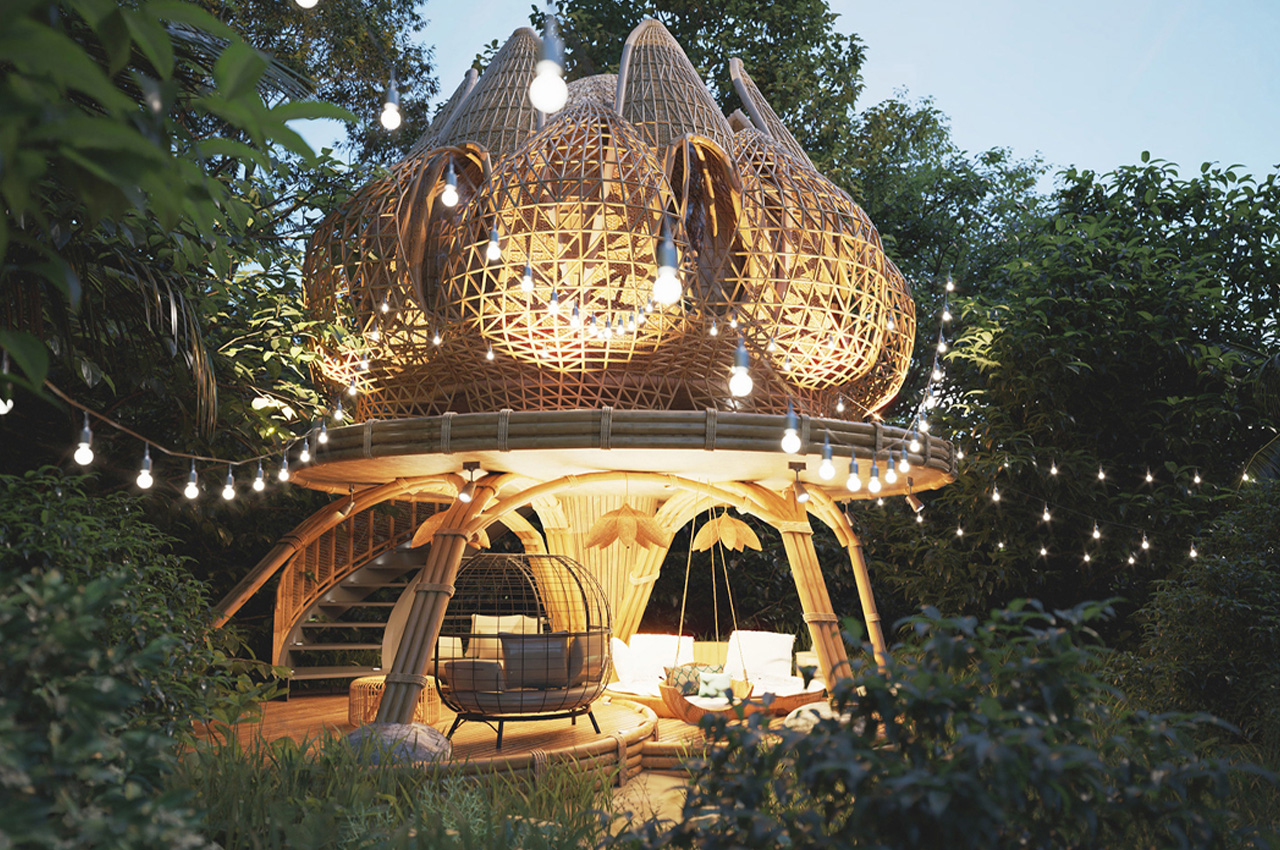
Known for creating 3D visualizations of architectural residences that shake up the thrillseeker in each of us, graphic designer Thilina Liyanage has conceptualized a subdued bamboo retreat for when the adventurer grows tired. Taking inspiration from lotus flowers and magical realism, Liyanage’s Hideout Lotus Bamboo Villa rises above the ground on bamboo pillars to form a raised, single-story home resembling the look of a giant rattan table with an intricate, interwoven bamboo lotus mounted on top.
From an exterior perspective, the Hideout Lotus finds a common outdoor area just below its mounted single-level lotus-inspired living area. Four curved bamboo pillars stack atop one another to create borders around the common area, creating a tiered walking space that contains the villa’s canopied deck. Wooden panels line the deck, complimenting the rest of the bamboo structure, where globular concrete mounds harness the villa’s main support beams.
Three wide bamboo shafts elevate Hideout Lotus’s upper deck, which supports the villa’s main interior living area. In a congruent style with the ground deck, the upper deck fashions wooden panels for its flooring, which merge with the villa’s more intricate bamboo lacework. Like a lotus flower floating in a pond, the main villa casually rests on the upper deck, with its bottom petals artfully draped over the edge. The villa’s windows are stationed behind an overlaid bamboo lattice that enwraps the entire villa, giving it an alluring, if not elusive personality.
Symbolic for rebirth and groundedness, the lotus is lauded for its ability to bloom beautifully despite murky waters. Positioned in a dense, wooded area, Liyanage’s Hideout Lotus Bamboo Villa bursts from the ground below in bamboo roots and chutes to grow into a hideaway that creates space for recharging and getting away from the thrill of it all.
Designer: Thilina Liyanage
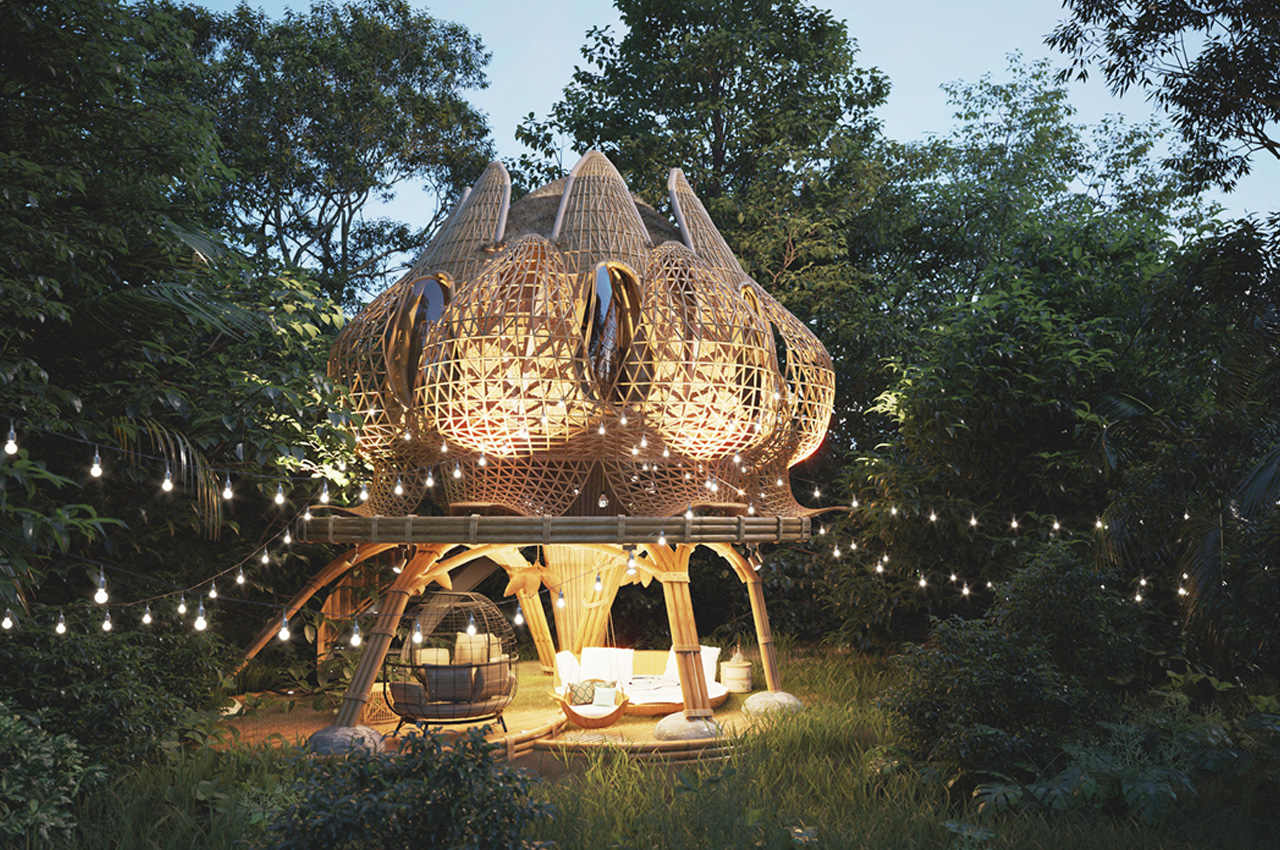
The villa’s ground-level deck contains an outdoor common area complete with petal ceiling fans and rattan furniture.
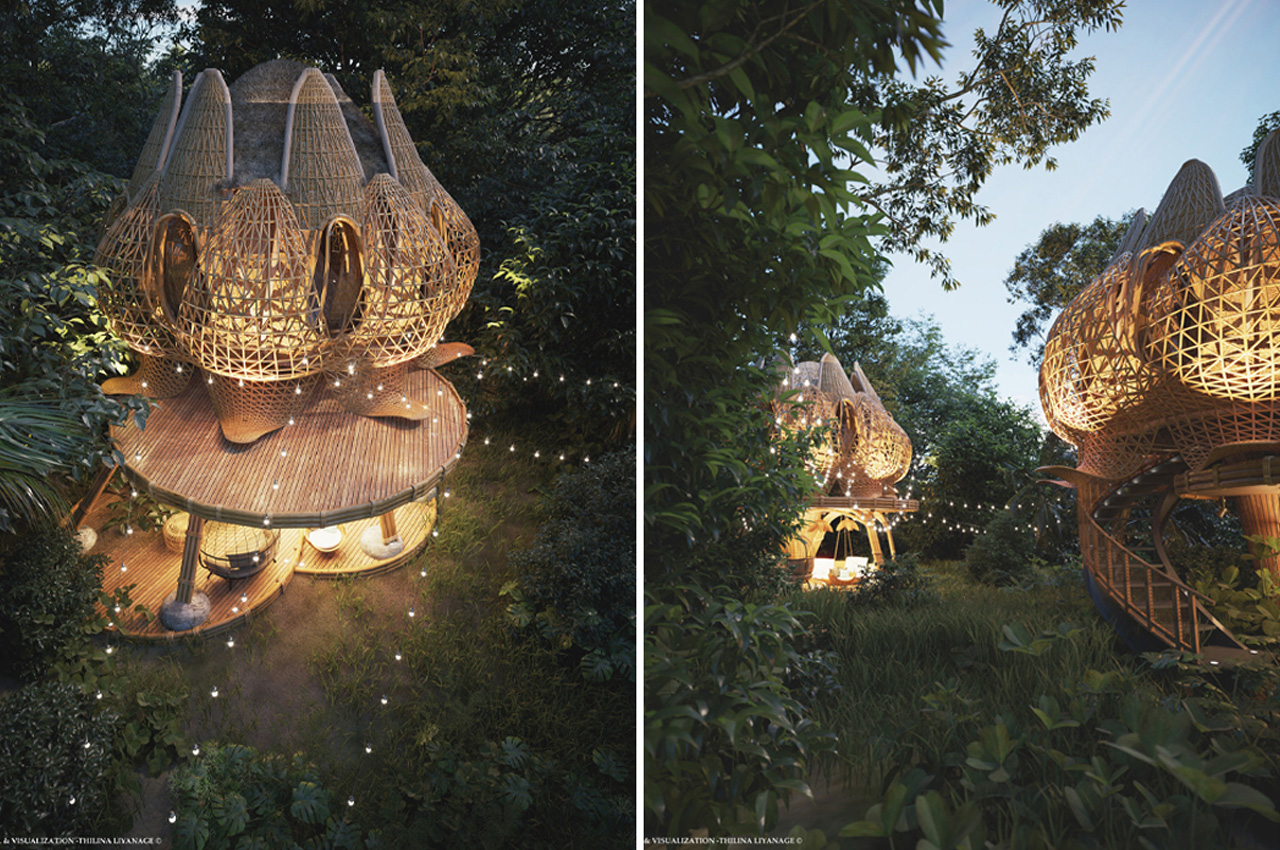
Forming a cluster of villas, each one of Liyanage’s Hideout Lotus Bamboo Villa is connected to one another by strings of lights.
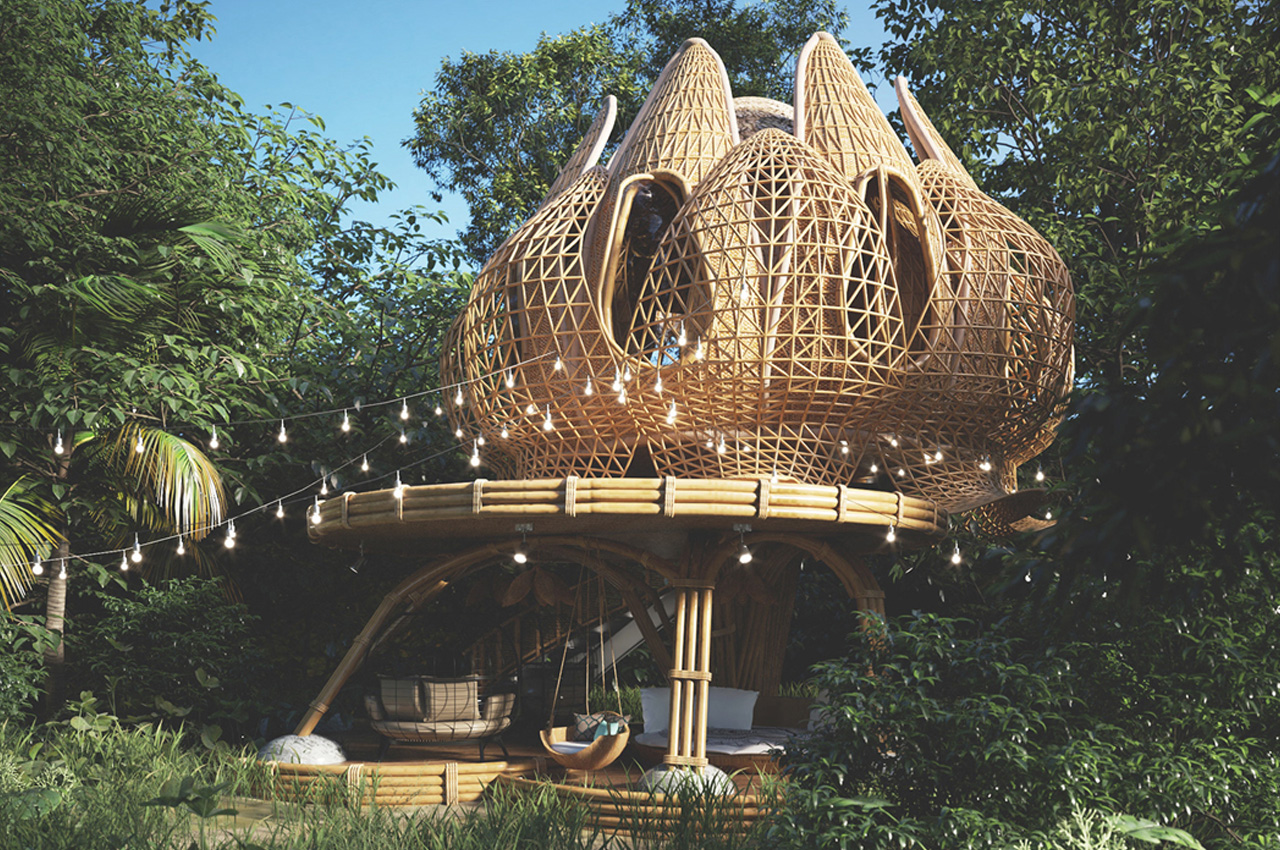
Reminiscent of cloaked fairy tale bungalows, the bamboo lattice that envelops each villa only enhances their enigmatic personalities.
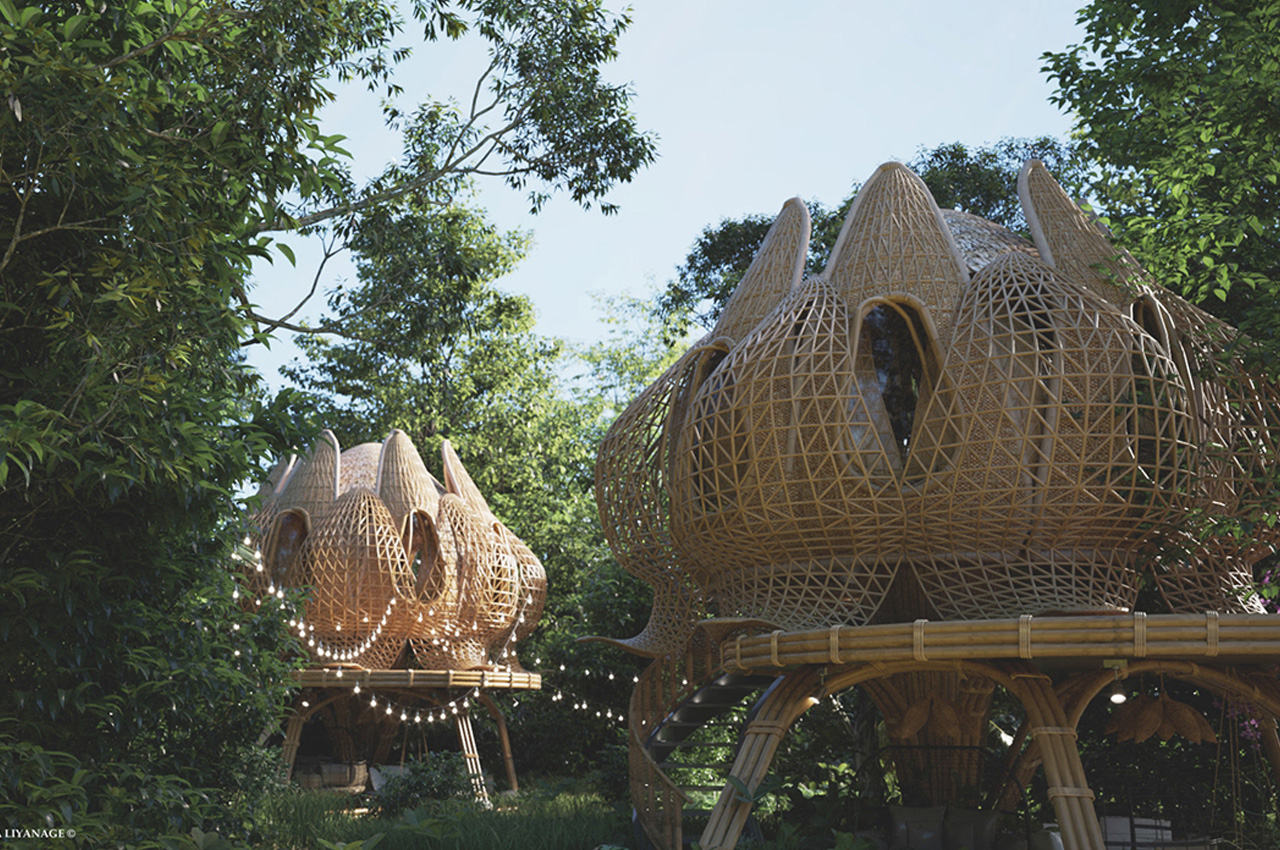
Draped over the upper deck’s edge, the curved bottom petals of each villa are some of the finer details in Liyanage’s tribute to the lotus flower.
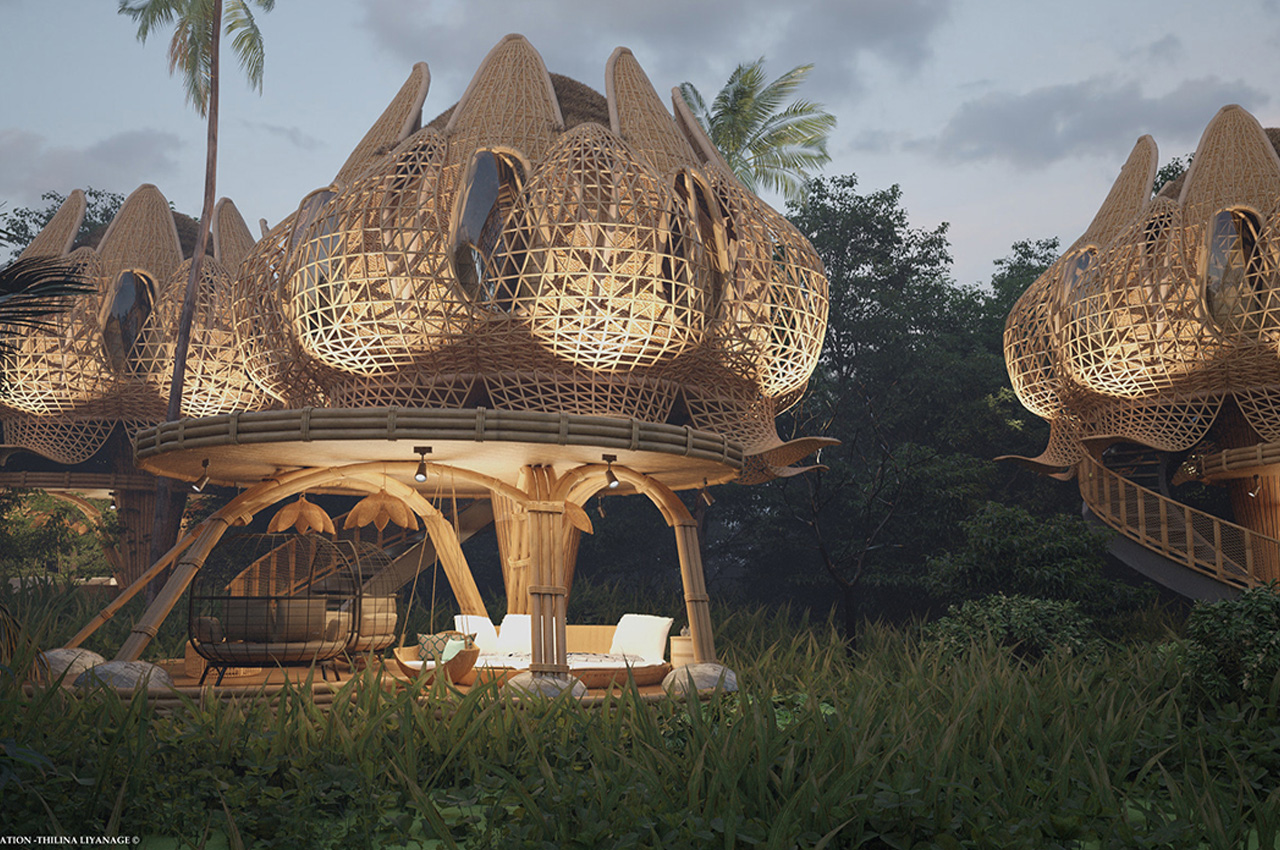
Supported by groups of concrete-fortified bamboo support beams, each lotus villa rests on a stabilized, secure foundation.
